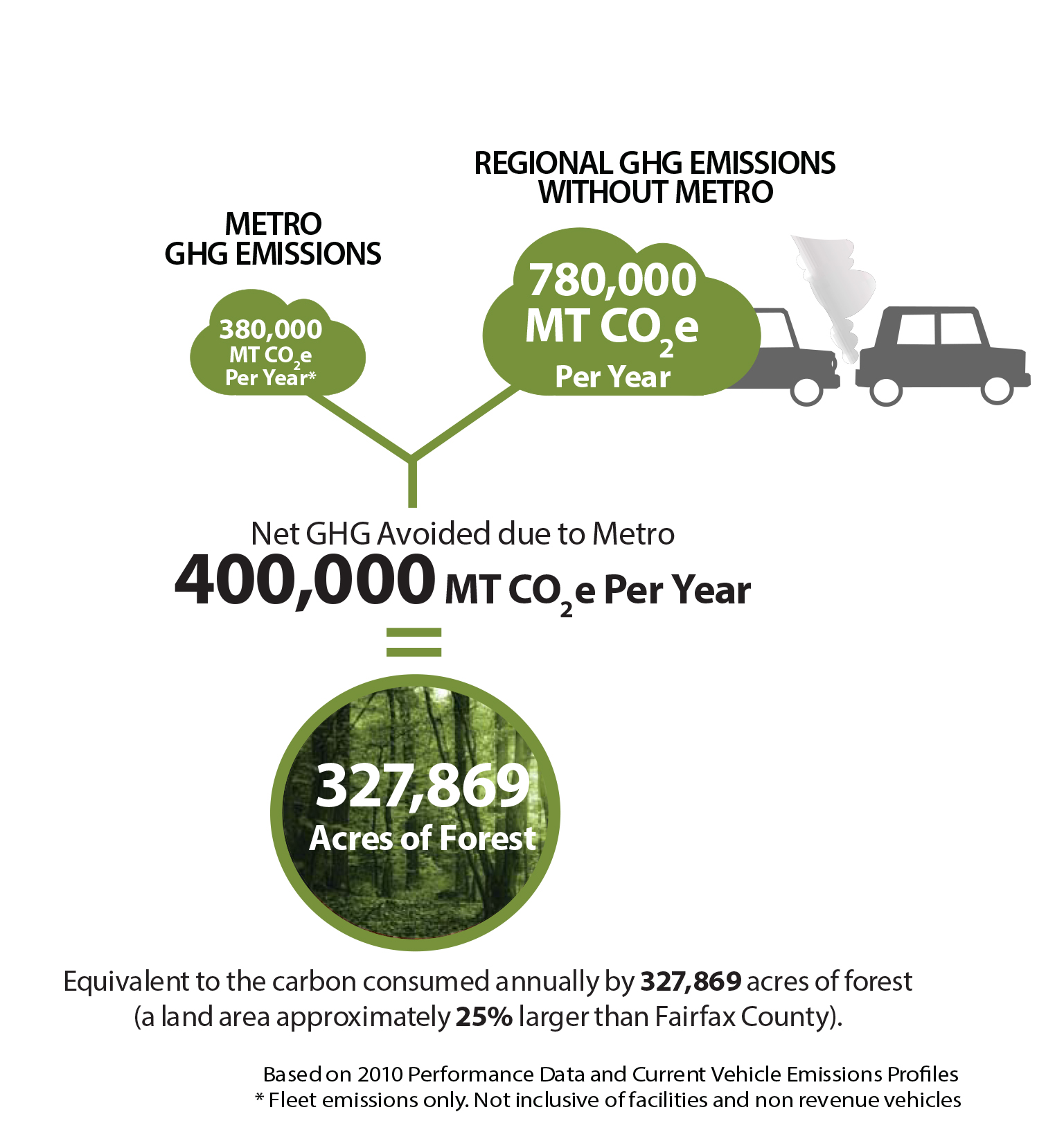Metro Riders Fight Climate Change 1.2 Million Times Every Day
Metro provides the transit network around which a compact, low-carbon region can be framed. Without Metro available, the region would release an additional 400,000 metric tons of CO2e per year – equivalent to the carbon consumed annually by a land area approximately the same size as Fairfax County. By advocating for transit-oriented development as the region grows, Metro can continue to increase the net greenhouse gas (GHG) benefit or GHG displacement it provides to the region in three ways.
1. Shifting People From Cars
Transit moves people with less GHG emissions than most automobiles. By increasing ridership and moving people out of their vehicles and onto transit the region benefits from reduced vehicle emissions. If you want to know specifically how your transit commute benefits regional climate change try Metro’s Greenhouse Gas Savings Calculator. The calculator measures the difference between emissions if you had taken a vehicle on your commute or taken transit. Try it out and see how much GHG emissions you are save on your next Metro trip.
But that is not all. Metro runs every day regardless of if you decide to ride it or not. As a result, making the decision to get on Metrorail or Metrobus saves all the emissions from your car if you decided to leave it in the driveway. This means that on a personal level you are saving all the GHG emissions that would have come from your car. Based on the region’s average commute, every commute Metro takes off the roads saves an average of 67kg of C02e per week. This equates to the same annual emissions as the average US home’s electric use for half a year.
2. Congestion Reduction on the Roads
Metro also takes cars off the road, avoiding even more emissions from cars idling on traffic jams. Stop-and-start vehicle movements, particularly from larger vehicles such as trucks, increase pollution. By riding public transportation you help reduce vehicle idling in congestion and maximize the efficient use of existing road and transit infrastructure.
3. Sustainable Land Use Patterns
Metro has helped the region grow in ways that are pedestrian and bike-friendly, and has allowed people to simply travel fewer miles – you can live, work, shop, and enjoy recreation opportunities in places closer to one another, thereby avoiding the need to travel as much. See our recent post on the Environmental Benefits of Connected Communities.
So the next time you ride Metro, just think of the three ways you are helping fight regional climate change and support a sustainable region.
To reduce regional GHG emissions Metro’s is actively striving to become more energy efficient and increase system ridership. As part of Metro’s Sustainability Initiative the Authority has set a target of a 25% increase in ridership (annual trips) and a 10% increase in GHG displacement by 2025.
This post forms part of a series featuring content from Metro’s Sustainability Agenda, part of Metro’s Sustainability Initiative.



Recent Comments